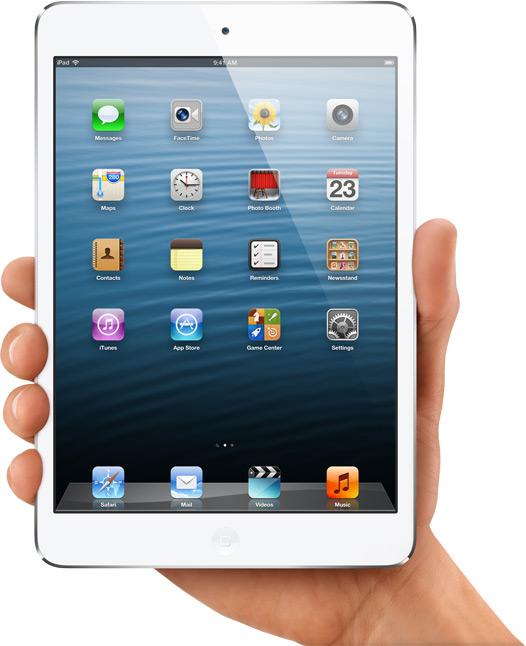Along with unveiling its new fourth generation iPad on Oct. 23, Apple also launched a smaller alternative tablet, the iPad Mini. The Mini, about 8 inches diagonally, is in between the iPhone 5, 4 inches, and the original iPad, 10 inches.
Although the Mini may seem superfluous, it does fill a gap in the line of Apple products. It is aimed more as an e-reader than a laptop alternative, which was the role of the original iPad.
The Mini has some positive aspects, including the full web and app functionality of the original iPad, the plethora of apps available in the Apple Store and its unique size, which stretches the iPhone screen to a comfortable size while maintaining a manageable level of portability. The screen is small enough to type using only thumbs and can fit in large pockets and handbags.
However, one shortcoming of the iPad Mini is its lack of Apple’s retina display found in many of its mobile products since the iPhone 4. The last generation iPad was outfitted with retina graphics, and the Mini was released half a year after that iPad.
Another major drawback of the Mini is its high price in comparison with competing tablets of equivalent size. The cheapest model of the Kindle Fire from Amazon costs $159, while the iPad Mini is over $300.
While Apple may rely on its large App Store to attract customers, this disparity in pricing may be too steep. The large price tag may be justifiable if the Mini had a retina display or was closer in hardware to the third-generation iPad instead of the second.
The Mini has a regular display and a fifth-generation Apple processor while Apple’s newer mobile devices include the retina display and the sixth-generation Apple processor. Meanwhile, there are many competitors to the iPad Mini that can be picked up for nearly half the price and with comparable hardware specs. However, if the Apple App Store is something that you cannot live without, then the Mini should be considered when looking at e-reader sized tablets.
























